Q4 2024 HIRE Report

Q4 2024 HIRE Report
Quarterly Hiring Insights and Recruiting Environment (HIRE) Report by Advanced RPO
Executive Summary
Hiring is hard. We’re here to make it a little easier with the Hiring Insights and Recruiting Environment (HIRE) Report. In it we share our unique perspective on succeeding in today’s market, which comes from working with growing companies every day to design and execute their talent acquisition programs.
If I had to summarize today’s hiring environment in one word, I’d say it’s cautious. Our clients are backfilling critical roles as needed but hitting the pause button beyond that in many cases. Employees share this sentiment as well, with far less people leaving jobs like we’ve seen over the last year or so.
This wait-and-see approach — on both sides of the hiring equation — leaves more time for both employers and talent to think about what they really need.
For employers, it’s a more data-driven approach to hiring that allows them to identify their skill gaps, make better hiring decisions, and maintain a strong employer brand that ensures a full candidate pipeline. After the last few years of nonstop hiring, it’s safe to say it’s time to regroup and put the talent acquisition house back in order.
Candidates are still really frustrated with the hiring process. I’m amazed at how many organizations still don’t follow up with applicants — especially considering how easy it is to automate various communication touch points throughout the hiring process. We’ve been trying to educate buyers on the cost of a poor candidate experience, especially its impact on the employer brand.
When will we see the next big shift in hiring? The reality is that we’re still several quarters away from any major change. The November election looms and I’m expecting 2025 budgets to remain cautious. I look forward to a more predictable economic environment!
What do companies need to know right now to meet their hiring goals? That’s the question we’ll answer this quarter and moving forward with the HIRE Report.
What’s in the Q4 2024 HIRE Report?
In this report, we deliver hiring insights in three areas that you might not have yet explored — the number one employer branding mistake, RTO’s unintended impact on DEI progress, and a workforce demographic that isn’t getting attention (but should).
Then, we shift to giving you a look at the recruiting environment in three different industries — life sciences, manufacturing, and food & beverage. Our subject matter experts offer their take on what’s happening in each of these industries, and how to focus for the second half of the year.
We wrap up with some insights on pay transparency. Given the inconsistency of legislation across the country, it’s an issue that’s critical for some, and just around the corner for many. If you aren’t ready, you should be.

Pam Verhoff
President and CEO, Advanced RPO

Hiring Insights
Most companies aren’t getting their employer brand right
An employer brand can be one of two things: a recruiter’s greatest advantage or their biggest obstacle.
What is an employer brand?
An employer brand is a company’s reputation as an employer. Candidates create their own narrative about who you are as an employer well before they formally enter your hiring process.
They do this by seeking out information via your own website, online rating sites like Glassdoor and LinkedIn, and conversations with your current and former employees.
It doesn’t really matter what a candidate’s impression is of you as an employer — so long as it’s accurate. We’ll explain.
Scenario #1:
Other companies promote themselves as flexible, committed to diversity, and having great leadership, so you push the same narrative. However, it’s creating a lot of work for your recruiters, a longer hiring cycle, and a less-than-ideal candidate experience. And, at the end of the day, those new hires quickly realize that the employee experience doesn’t meet their expectations, so turnover spikes at the 6- and 12-month marks.
Scenario #2:
Your company has an accurate reputation for holding employees to high standards and rewarding top performers with career-making opportunities. While applicant numbers are average, most candidates are the right fit — ambitious, looking to make a name for themselves, and seeking a competitive environment. Recruiters can easily evaluate candidates on their skills and potential, and employee retention is high.
Here are some considerations for building out your employer brand:
Actively manage your employer brand. Keep up with what’s being said, address issues proactively, and encourage employees to talk about their (great!) experience online.
Prepare your recruiters with an accurate talk track, honing in on 2-3 things that really make you different (and are true!).
The employer brand should make the recruiter’s job easier, acting as a magnet for candidates who identify with your environment, employee expectations, and values.
Our expert’s advice
How can you evaluate the strength and effectiveness of your employer brand? A good place to start would be to assess the ratio of total to right-fit applicants, collect anecdotal recruiter feedback, and examine new hire retention.

Grace Kraemer
Recruitment Marketing Manager, Advanced RPO
RTO mandates are killing DEI progress
Businesses have been trying to figure out a long-term plan for where their employees will work ever since it was deemed physically safe to return to the office. The answer seems to vary based on factors like geography and industry, but the highest percentage of employees (53%) are working in hybrid arrangements right now, according to Gallup.

And now, depending on how quickly a company moved on its return-to-office (RTO) strategy, it’s time to implement your plan or reassess the effectiveness of it. Often, one of the first questions asked is: how does our RTO plan impact our ability to retain employees and attract new talent?
A well-documented downside of in-office and hybrid work arrangements is that they narrow the potential employee pool to only those in close proximity to their office. But what most leaders fail to realize is that this move back to the office, even in a hybrid capacity, has an unintended yet detrimental impact on a company’s DEI progress when it comes to the people with disabilities.
When the pandemic forced employees home, job seekers with physical or mental limitations that prevent them from taking in-person roles found themselves with a lot of options. Now that many companies have deemed it best for employees to work out of an office, at least part time, these employees find themselves out of a job.
Is this the case for your company? Do you have any idea how many of your employees have disabilities that prevent them from returning to the office? Is there any way to proactively address this and retain them?
No one cares about the fastest-growing workforce demographic
Look around the web, and you’ll find plenty of articles on how to attract Gen Z candidates with a more meaningful mission and values, or how to retain more working parents with better work/life balance. What you won’t find is advice on how to cater to the fastest-growing workforce demographic — workers aged 75 and older.
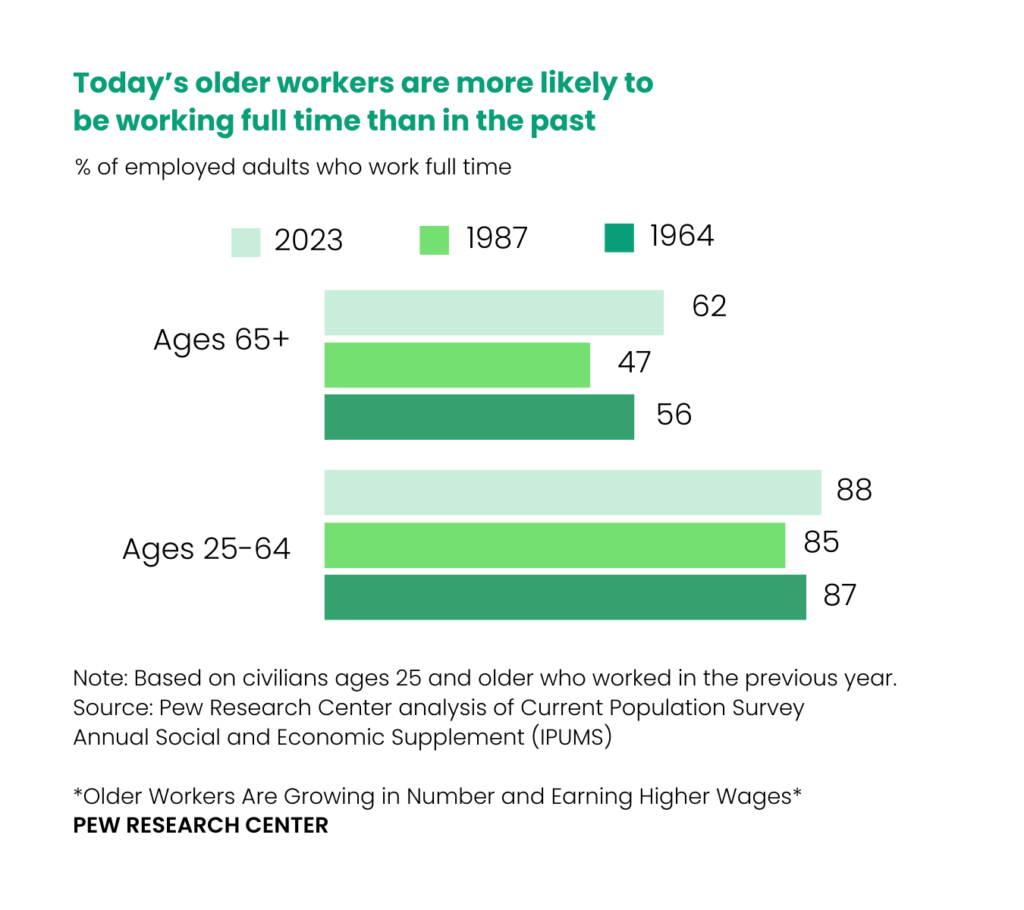
That’s right. Seems hard to believe, but it’s true, according to Pew research. The size of the 75-and-older workforce has quadrupled in size since 1964. More older adults are forgoing retirement and continuing to work in some capacity, for several different reasons.
The most common reason is that workers are worried about inflation or having enough for unexpected expenses as they age. Today’s retirement plans and policies also discourage early retirement, making it financially beneficial to keep working.
There’s also a narrative around longevity, thanks to a greater focus on health and wellness. Staying engaged in work past retirement can keep our mind and body younger.
How can you attract and retain older workers?
Assess your hiring processes and policies to ensure it’s free of age bias or discrimination.
Consider allowing your older workers to enter “flextirement,” working reduced hours to stay engaged, contribute their knowledge, and mentor younger workers.
Re-evaluate your employee benefit plans to make them more attractive to older workers.
Our expert’s advice
Older workers offer tremendous value to companies beyond just performing their job duties. They come with tribal knowledge about how things are done, can mentor younger employees who might have begun their careers in remote positions, and they are often positive examples of corporate culture.

Mike Foster
Director of Client Services, Advanced RPO
Recruiting Environment

Life Sciences
Articles we read
Layoffs continue into H2 2024, affecting roughly 25,000 workers
Drug Discovery and Development
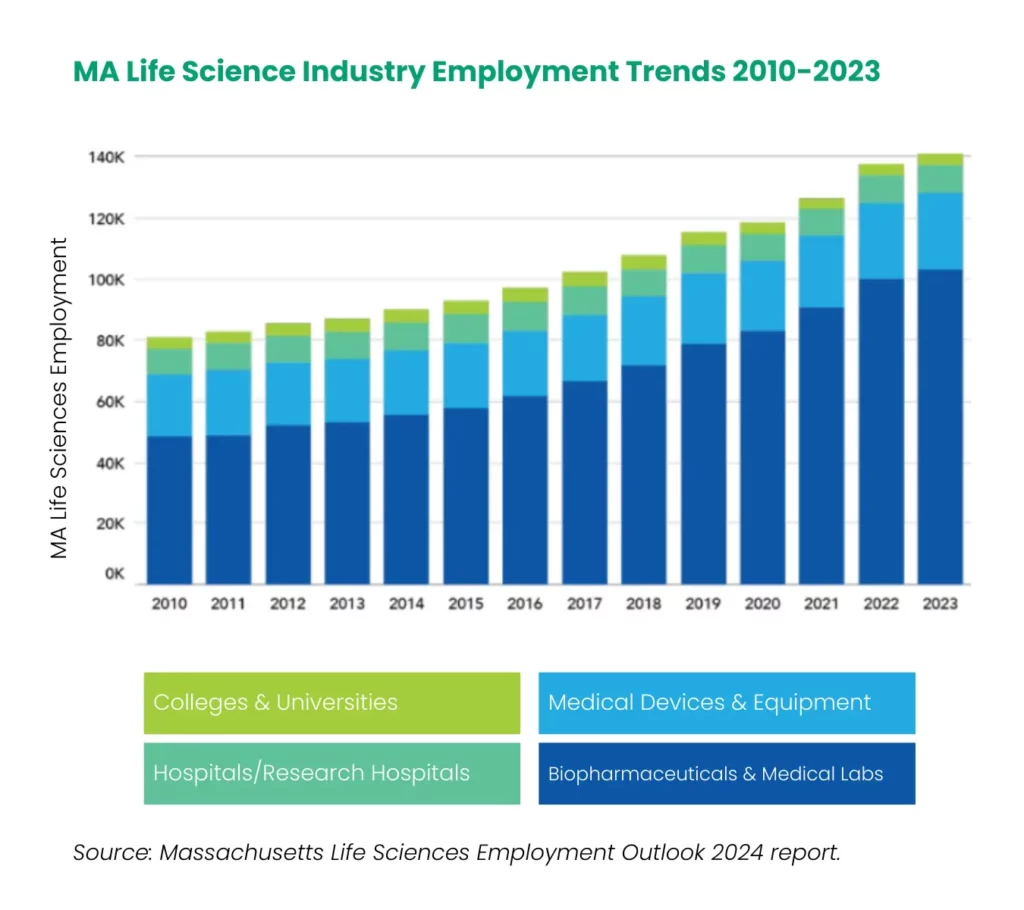
Our expert’s advice
Right now, there’s a wide disparity in hiring activity between the industry’s newcomers and incumbents. Start-up growth is really strong, with an infusion of nearly $3B in funding in Q1 2024 alone. And yet, large biotech and pharmaceutical companies like Amylyx, Takeda, and Biogen are shedding employees. Although hiring has slowed overall, that’s not the case everywhere. Geographically speaking, the Boston area remains a hot spot for future job growth, estimated to go up 32% by 2033. That is strong by any measure.

Ryan Feeney
Director of Business Development, Advanced RPO

Manufacturing
Articles we read
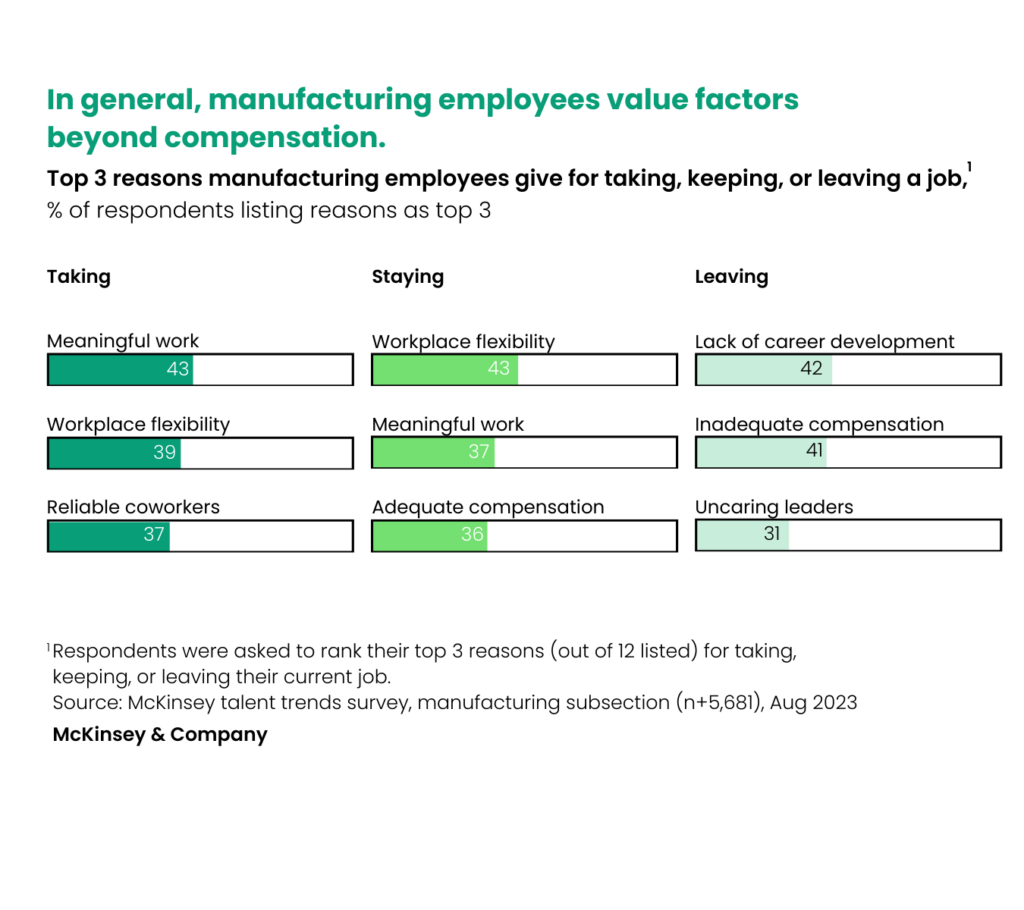
Our expert’s advice
The inflated cost of capital, the upcoming election, and the seemingly ever present risk of a recession — now being highlighted by an inverted yield curve — have caused manufacturing leaders to act with caution. Despite this, consumer spending is holding up, there’s a renewed push to bring more manufacturing stateside, and rate cuts seem more realistic than ever. As we look at the coming quarter and into next year, the biggest hurdle will continue to be unfilled jobs, at nearly 600,000 and rising. Organizations will need to focus on attracting and retaining talent to succeed and capture market share.

Justin King
Solution Design Director, Advanced RPO

Food & Beverage
Articles we read
Bakeries enjoying positive momentum
Food Processing
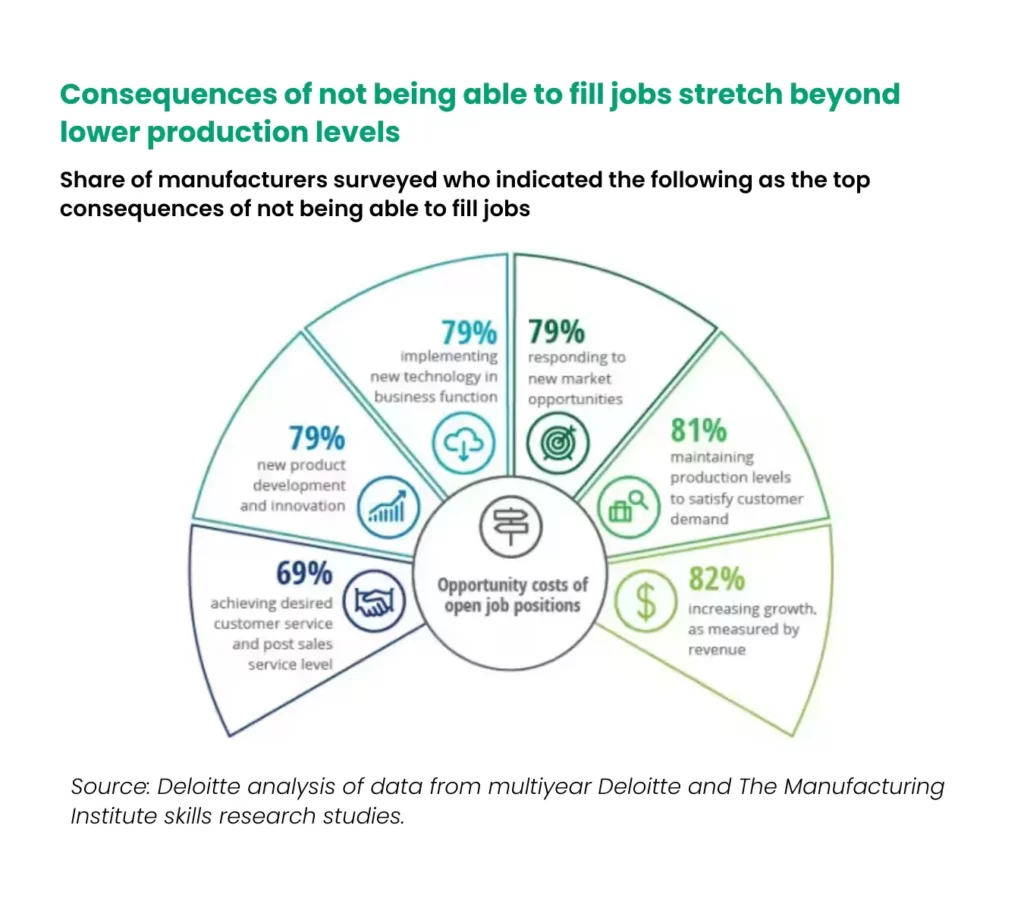
Our expert’s advice
Executives in the food & beverage industry have costs on their minds right now — manufacturing costs are rising, consumers have a high level of price sensitivity due to current inflation, and there’s an increased cost of capital. Another priority that is far from new is the talent shortage, at every experience level. However, there’s a ton of inconsistency in talent demand. There’s a balance of expansion activity AND plant closings happening simultaneously across the country.

Tim Oyer
Vice President, Advanced RPO
Looking Ahead to Q1 2025
Next Up: Pay Transparency
Our expert’s advice
Pay transparency isn’t going away, so embracing it early will be a key differentiator for companies and their employer brand in attracting and retaining top talent. While it creates some internal work and alignment up front, it ultimately creates an inclusive culture of trust and accountability, which is something every company should be striving for.

Jenna Hinrichsen
Director of Recruitment Strategy, Advanced RPO
Benefits of pay transparency
Close gender & racial wage gaps

Attract more job applicants

Foster a fair work environment

Getting Started
- Conduct an internal pay audit to understand where existing employees fall on the pay scale.
- Consider a partner like Advanced RPO for guidance in setting market-based, competitive compensation ranges.
- Define compensation ranges by role and ensure existing employees fall within those ranges.
- Communicate compensation ranges and compensation philosophy to existing employees.
- Include compensation ranges in internal job descriptions and external job postings for consistency and transparency.
For more information about any of these topics or to learn more about how an RPO partner can help you reach your hiring goals, please contact us.
Subscribe
Get updates and new content delivered right to your inbox. Unsubscribe anytime.
Featured resource
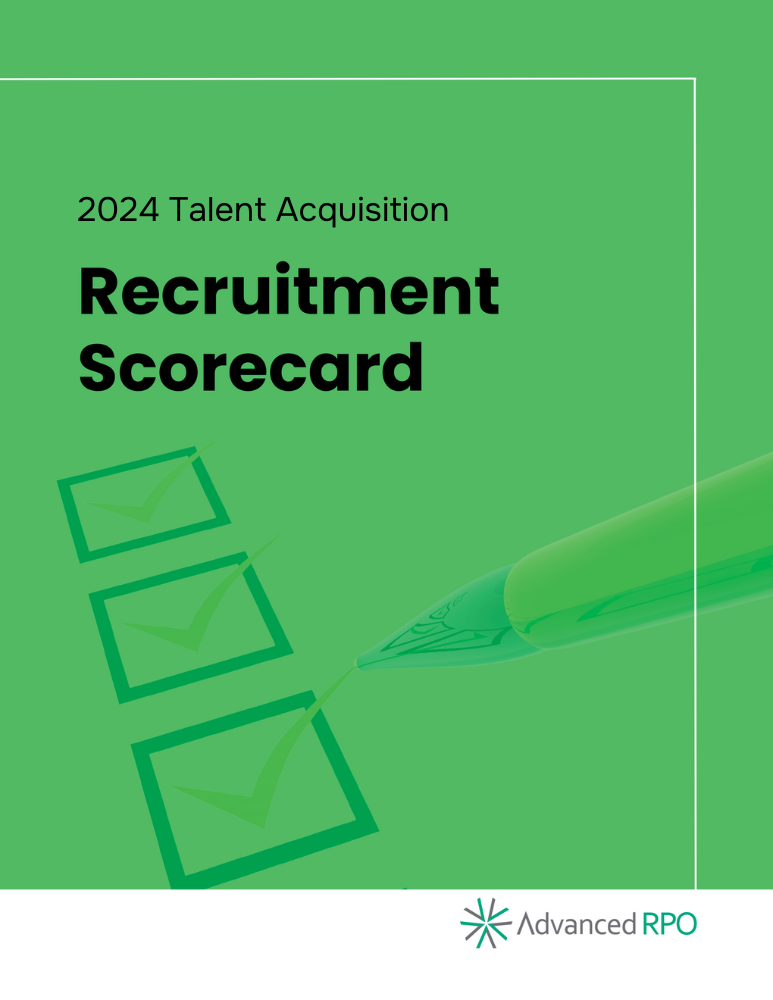
2024 Recruitment Scorecard
Jumpstart your talent acquisition improvement plan with an 8-step recruiting program evaluation.
